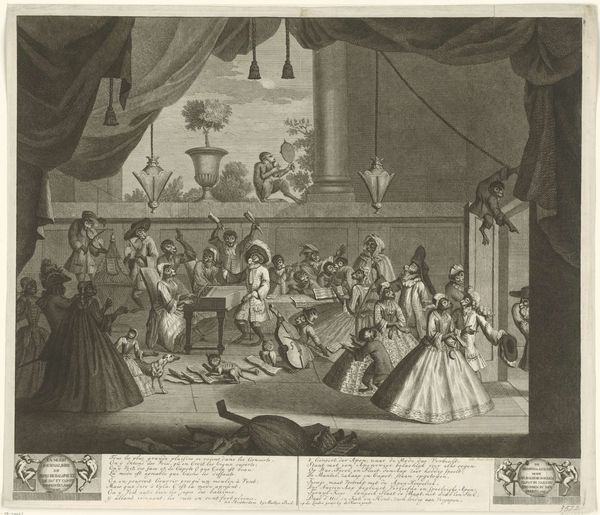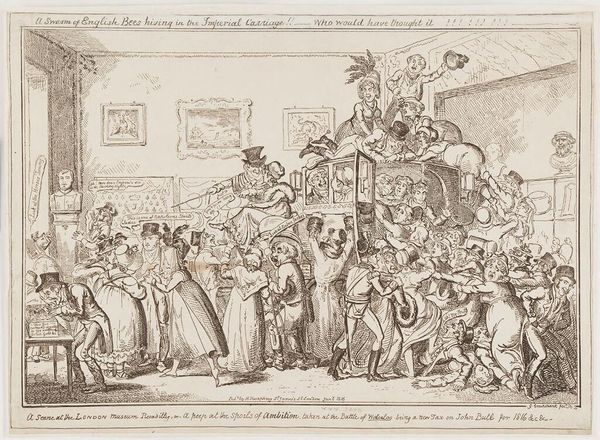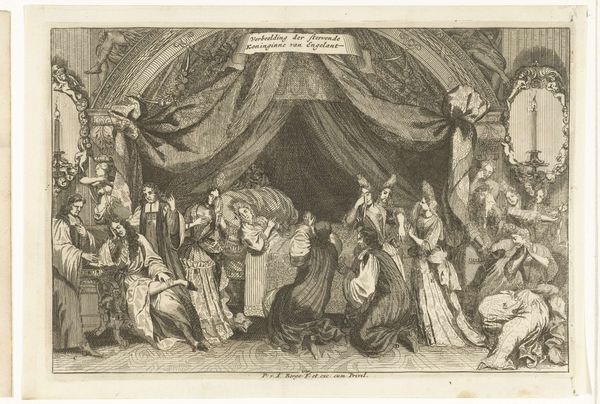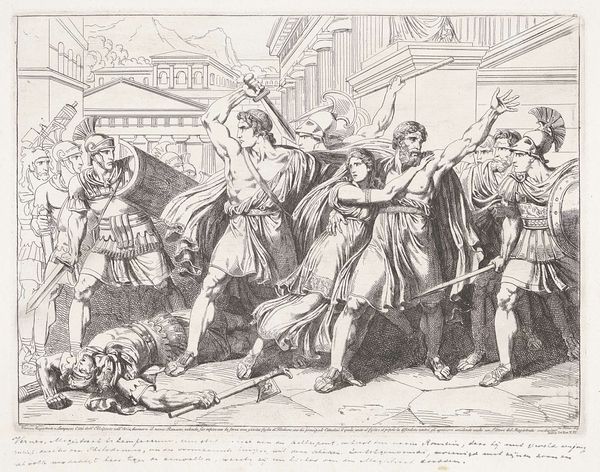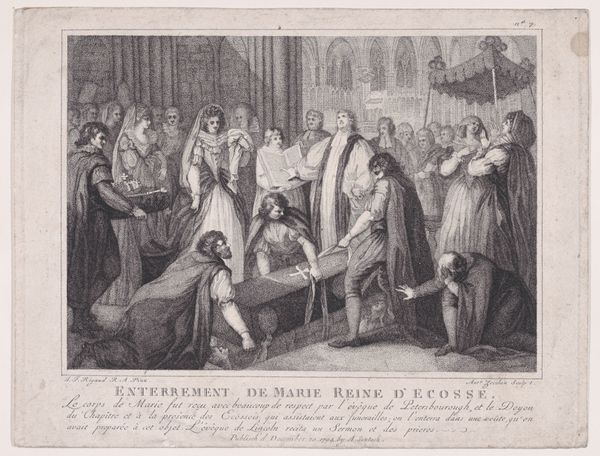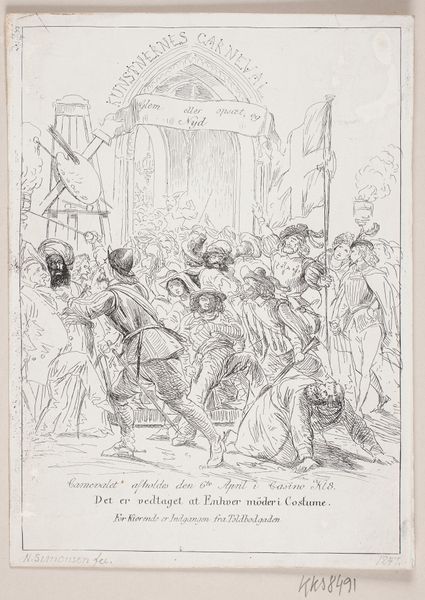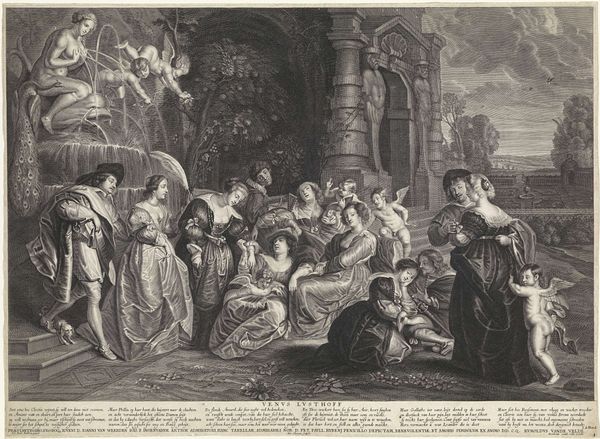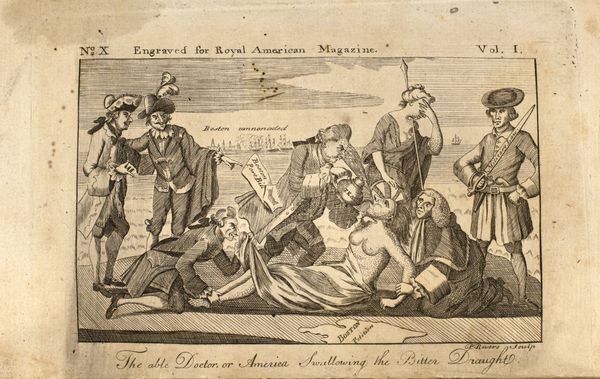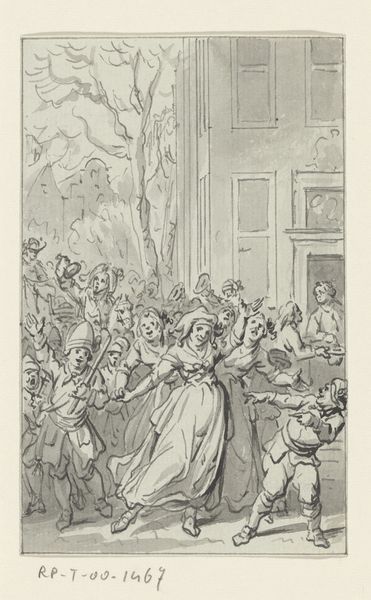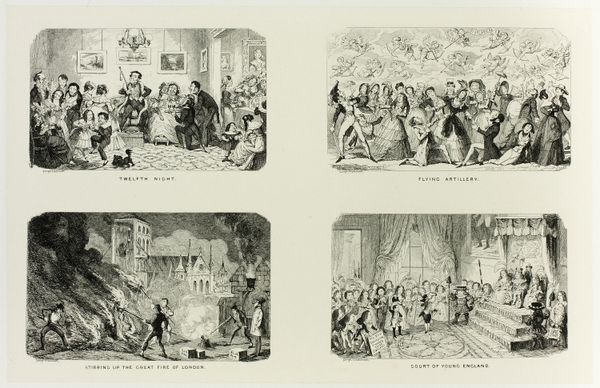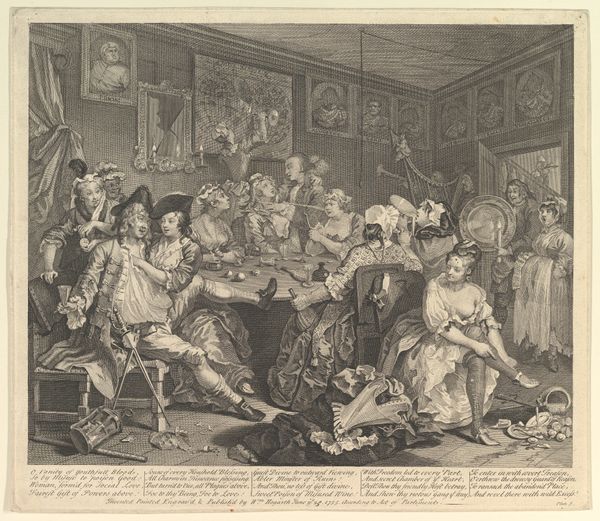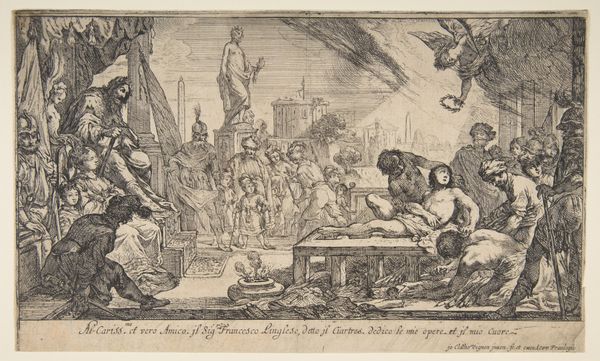
As It Ought to Be or The Ladies Trying a Contemptible Scoundrel for a "Breach of Promise" from George Cruikshank's Steel Etchings to The Comic Almanacks: 1835-1853 c. 1850 - 1880
0:00
0:00
drawing, print, etching, paper, ink, pen
#
drawing
# print
#
etching
#
caricature
#
paper
#
ink
#
pen
#
genre-painting
Dimensions: 161 × 412 mm (primary support); 252 × 507 mm (secondary support)
Copyright: Public Domain
Curator: This piece, held here at the Art Institute of Chicago, is one of George Cruikshank's satirical etchings from his Comic Almanacks, specifically "As It Ought to Be or The Ladies Trying a Contemptible Scoundrel for a 'Breach of Promise'". It was likely created between 1850 and 1880. Editor: Wow, the mood here is brilliantly vengeful, isn't it? A delightful takedown. It feels like a stage play—packed with characters, dramatic lighting. It practically vibrates with injustice. Curator: Absolutely. Cruikshank's work is deeply embedded in the social fabric of Victorian England. The "breach of promise" lawsuit was a common occurrence where women could sue men for failing to follow through on a marriage agreement, leaving them socially and economically vulnerable. Editor: It's all there in the composition—the accused is this tiny, wretched figure surrounded by this furious, judgmental crowd. Is it just me, or do all of these women have really severe expressions? The artist really emphasized their power here. Curator: Exactly. Cruikshank cleverly inverts the power dynamic. Instead of a male judge and jury, we see a courtroom entirely populated by women, levying judgement on a man accused of this betrayal. It comments on the gendered legal structures of the time. He does this with meticulous detail: notice the papers strewn, their expressions ranging from righteous anger to keen interest. It speaks volumes. Editor: You are right, that adds to the entire chaotic vibe! I mean, think about it: a jury of scorned women, fueled by the promise of karmic payback—what a delicious fantasy. It challenges conventional roles and it also acknowledges a deep frustration, right? It's more than just funny; it's revolutionary in its own quirky way. Curator: Yes, these pieces would have served as visual commentary to many current social issues. While comedic and exaggerated, Cruikshank makes very poignant observations about legal processes and society’s relationship to them. Editor: It's an amusing piece, offering an imagined courtroom in which power, at least symbolically, shifts to those who so often find themselves wronged. It gives you a moment to ponder justice—and chuckle a bit too. Curator: I agree. Cruikshank gives us this potent blend of art, satire, and social critique that provides fascinating insight into the social issues of his time.
Comments
No comments
Be the first to comment and join the conversation on the ultimate creative platform.
